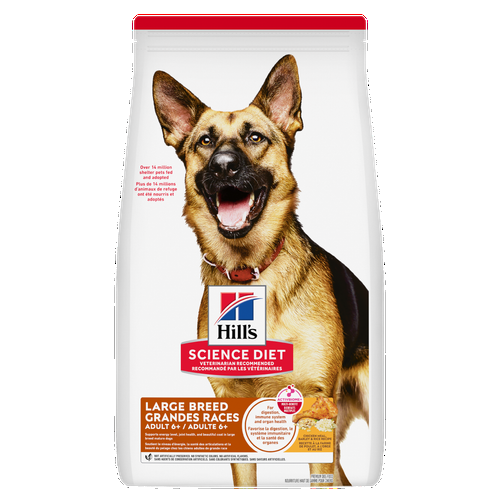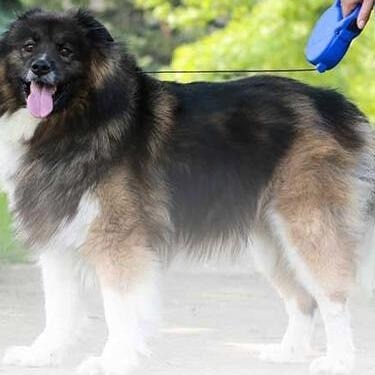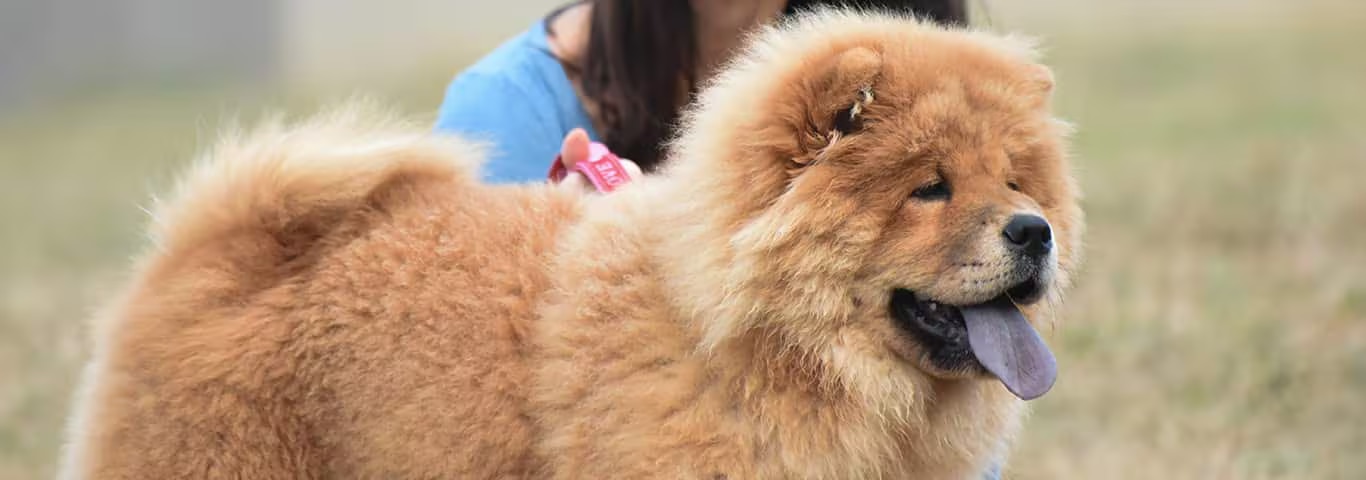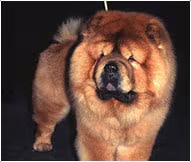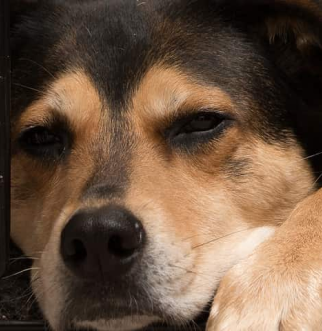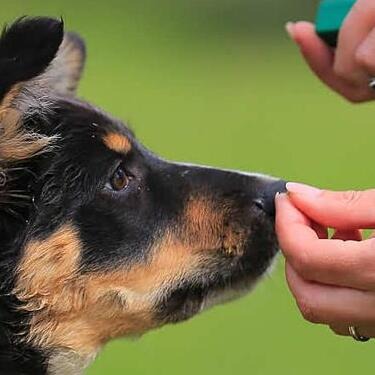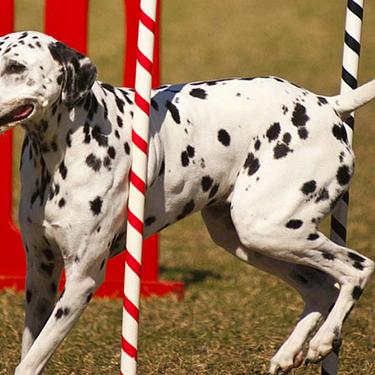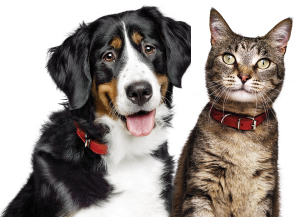The chow chow is a square dog with post-like straight legs. The straight legs contribute to a somewhat stilted gait.
The chow chow has erect ears, a broad skull and a tail curled up over the back. The trademark characteristic is, of course, the blue/black tongue. The facial wrinkles (often obscured by hair) give the chow chow a scowling expression. For his size, the chow chow is a strong, sturdy dog.
It has two coat types. We are most familiar with the rough or longer coat. This is a straight, off-standing coat, which gives chow chow puppies a fuzzy, teddy bear appearance. The smooth coat is a shorter variation. Both coat types have a dense undercoat. Chow chows are most commonly seen in red or black coloration, but any solid color is acceptable.
Chow chows are not usually social, outgoing dogs. They tend to be aloof with strangers and can be aggressive with other dogs. This is fitting with their history as guard dogs for homes and livestock. Early socialization to other dogs, pets and people is important. Chow chows may become nuisance barkers if their alarm barking is not controlled.
Chow chows are fairly intelligent but they have both an independent and a stubborn streak, so training them can be a challenge. To do well in competitions, they require a firm, patient trainer who has plenty of creativity. Chow chows are fiercely protective and need training to control this guarding tendency.
Chow chows are devoted to and protective of their families. To make them good family pets, they need plenty of early socialization including exposure to children. Chow chows do best with training to clarify their position in the family or they can become dominant. Despite the challenges of training, some chow chows compete and do well in obedience and agility.
Grooming varies with the coat type. A rough-coated chow chow does best with a daily grooming to keep him free of tangles. Smooth-coated dogs can be groomed briefly once or twice a week. Special attention should be paid to keeping the eyes and the facial folds clean because the profuse coat can retain dirt and debris.
The chow chow is perhaps the most ancient of the Chinese breeds of dogs. The breed can be traced back for thousands of years, and it is often questioned whether the chow chow developed from spitz-type dogs or whether spitz-type dogs developed from the chow chow.
The chow chow was a dog of many hats right from the start. These dogs have been known as sled pullers, hunters, livestock guarders and, unfortunately for them, dinner. The very name chow chow may come from the Chinese "chou" for edible, although most historians feel that the name is from the slang for curios, with the chow chow most certainly being an Oriental curio.
The chow chow reached the Western world in the late 1800s and began a rise to popularity, which has landed it in the top-10 American Kennel Club breeds. The breed has not fared so well in its native land where many chow chows were eliminated during the cultural revolution.
Adopt a pet. Change a life.
Are you prepared to adopt a pet? Use these tools to make sure you are ready for the commitment.
Adopt a pet. Change a life.
Are you prepared to adopt a pet? Use these tools to make sure you are ready for the commitment.


